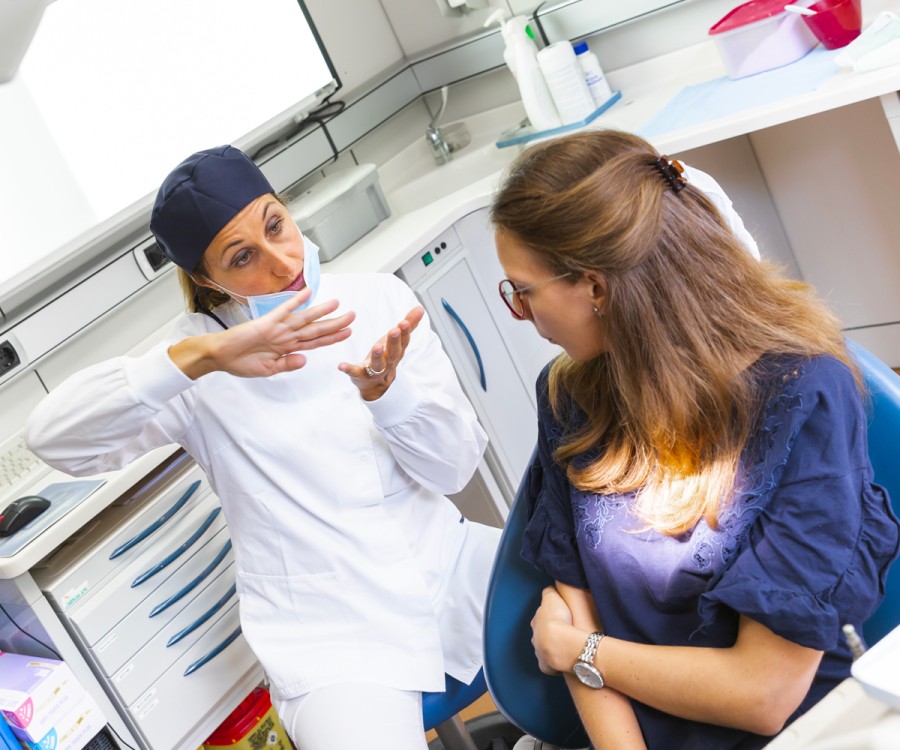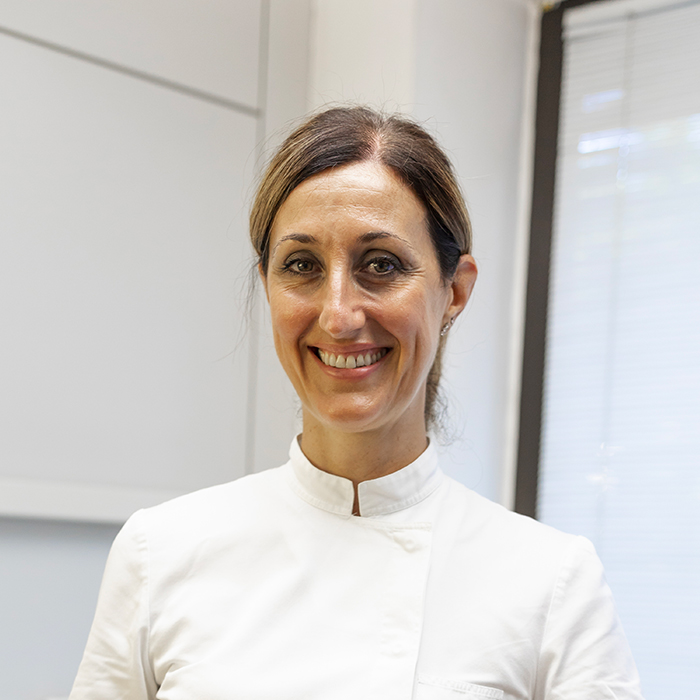Dental Braces in Udine
Dental braces are an essential orthodontic treatment to correct malocclusions and align teeth stably over time. At Fonzar Dental Practice, each patient receives a personalized orthodontic plan based on anatomical, aesthetic, and functional characteristics. Our multidisciplinary approach and modern technologies ensure precise diagnosis and results, providing a comfortable and safe experience.
How Fixed Braces Work
Fixed braces use brackets and orthodontic wires to apply constant pressure on the teeth, gradually moving them into the desired position. Fonzar Dental Practice performs complete clinical evaluations, X-rays, and digital scans to set a targeted treatment plan. Continuous supervision by our experts allows adjustments tailored to each patient, minimizing discomfort and optimizing treatment time and results.
Types of Braces
There are different types of braces: traditional metal, ceramic, or aesthetic materials that reduce bracket visibility, clear aligners, or lingual braces. Fonzar Dental Practice carefully evaluates the best option for each patient, combining functionality, durability, and comfort. The goal is to ensure treatment effectiveness without compromising smile aesthetics during orthodontic therapy.
Cost of Dental Braces
The cost of fixed braces depends on case complexity, treatment duration, and materials used. At Fonzar Dental Practice, every orthodontic plan is personalized, considering clinical needs and patient expectations. Clear and transparent communication about the treatment path allows patients to proceed with confidence and understanding.
Before and After Braces
Braces provide visible and lasting results: teeth gradually align, improving aesthetics, function, and oral health. At Fonzar Dental Practice, treatment progress is documented with photos and regular check-ups, allowing monitoring at each stage and timely intervention if necessary, ensuring long-term results.
Pain from Braces: Is It Painful?
During the initial phases of treatment or after adjustments, mild pressure or discomfort on the teeth may be felt. Thanks to our orthodontists’ expertise and advanced clinical protocols, discomfort is minimized. Fonzar Dental Practice uses high-quality materials and precise techniques to ensure effective treatment with maximum comfort, without compromising safety or long-term results.
When to Start Orthodontic Treatment
The ideal age to begin orthodontic treatment depends on the type of malocclusion and the patient’s dental growth. Fonzar Dental Practice performs personalized assessments, recommending the optimal timing for therapy. Regular monitoring and tailored treatment plans ensure timely and effective intervention, preventing complications and optimizing smile health and aesthetics.
Fixed Braces: Pros and Cons
Advantages of fixed braces include precise correction of tooth position, long-lasting results, and improved masticatory function. Considerations include the need for thorough cleaning and periodic check-ups. At Fonzar Dental Practice, a multidisciplinary approach and continuous support minimize discomfort, providing a positive and safe orthodontic experience.
Misaligned Teeth
Fonzar Dental Practice: Dentists in Udine
If you experience any of the following:
- Lack of space for teeth that need to grow
- Baby tooth does not fall out while the permanent tooth grows misaligned
- Permanent teeth erupt late despite lost baby teeth
- Upper teeth protrude too far forward (buck teeth), preventing lips from closing and protecting teeth from trauma and temperature changes
- Lower teeth protrude too far forward (underbite)
- Upper teeth do not meet lower teeth (open bite)
- Upper teeth close excessively over lower teeth (deep bite)
- Severely crooked or crowded teeth
- Predominantly mouth breathing with snoring and sometimes sleep apnea
- Speech difficulties
you have a dental misalignment problem: we recommend consulting an orthodontist immediately.

Who Treats Misaligned Teeth at Our Practice?
How We Treat Misaligned Teeth
During the first visit, the orthodontist examines the patient’s face and oral cavity to check for the presence of all teeth according to growth and age, explains any issues, and outlines how to resolve them.
To make a diagnosis, define objectives, and establish a treatment plan with a cost estimate, an additional visit is required for photos, X-rays, medical records, and dental impressions. Only after studying the models and X-rays does the orthodontist recommend suitable appliances and explain treatment methods and duration.
In addition to various functional removable appliances and traditional fixed braces (metal or aesthetic), invisible techniques can be used, especially in adults, such as lingual braces or clear removable aligners.
What Is Orthodontics?
Orthodontics deals with facial bone growth, tooth position, and occlusion—how upper and lower teeth meet. The goal of orthodontic treatment is a beautiful smile within a balanced and harmonious face and proper masticatory function, offering both aesthetic and functional benefits. Straight teeth are easier to clean, and proper chewing preserves not only teeth but also joints, neuromuscular systems, and surrounding structures.
In growing children, orthodontics can modify and harness bone growth to correct issues such as protruding teeth, recessed or prominent jaw, and narrow palate. In adults, where bones are fully formed, treatment primarily focuses on moving teeth when indicated.
Recommended Age for First Orthodontic Visit
The first orthodontic visit is recommended at age six, when baby teeth begin to fall out. However, earlier check-ups can detect skeletal and dental imbalances caused by habits such as thumb-sucking, pacifier use, tongue posture, or mouth breathing. Early treatment can intercept and often prevent future dental and skeletal issues that might require longer, more complex interventions, such as impacted teeth or narrow palate.
Who Is an Orthodontist?
An orthodontist is a dentist who, after earning a dental degree, continues three more years of university study dedicated exclusively to orthodontics, earning the title of “Specialist in Orthognathodontics.”
Why Should Treatment Be Performed by an Orthodontic Specialist?
Orthodontic treatment is not free from side effects, such as root shortening (resorption), tooth discoloration due to nerve death, bone loss, or gum recession. An orthodontic specialist can control and minimize these outcomes and, most importantly, set correct and achievable therapeutic goals based on dental and skeletal malocclusion and the patient’s age.
Using very light forces, low-friction modern brackets, and appropriate biomechanics ensures the desired functional and aesthetic results with minimal risk to teeth and supporting structures (bone and gums).
Further Reading
- Sorridibene
- Invisalign
- Ortognatodonzia / pag. 265-311
We effectively treat periodontal disease, caries and all other diseases of the oral cavity.
Identify your problem.


























